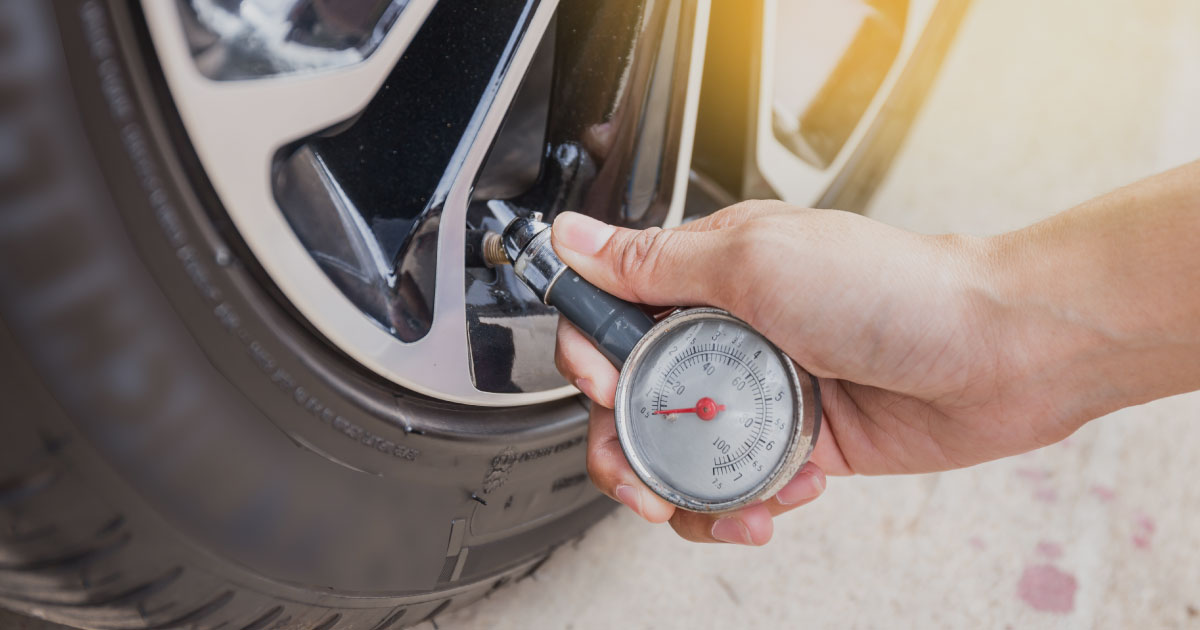Disclaimer: Some links on this page are affiliate links. We may receive a commission if you make a purchase through these links. See our full disclaimer here.
There’s a reason that a skydiver meticulously checks the parachute and safety equipment for signs of wear before each jump. Skydivers understand the direct connection between the parachute and safety.
Think of your tires as your parachute. The health of your vehicle’s tires can directly impact the health and safety of the occupants of the vehicle.
Tires Get Ignored
Too often, tires are ignored, and the driver doesn’t realize that the tires are worn until someone else points it out. Frequently, an automotive person points it out, and the driver discounts it as a sales technique. The best thing to do is educate yourself so you can tell the difference. Tires are expensive and keep you safe on the road, so it’s important to invest a little time caring for them.
Tire tread wear will affect the handling of the vehicle, lower gas mileage, and decrease the chance of an accident or breakdown.
What Affects The Tire Tread?
There are three main aspects of your tires to consider when it comes to wear and tear:
Wheel Alignment
If the vehicle’s wheel alignment is off, the tires will wear unevenly. The inner or outer edge of the tire tread may be more worn than the center tread. Replacing tires without fixing the wheel alignment will cause the same safety issue with the new tires and shorten their life considerably.
Tire Pressure
When a tire has too much air in it, it is overinflated, and the center of an overinflated tire pushes out slightly. This causes the center to have more contact with the road, so they will end up with more wear in the center of the tire and wear out faster than the sides. They are also at greater risk of rupturing.
Conversely, when a tire has too little air in it, it is underinflated. An underinflated tire will show excessive wear on the outer edge, with more tread evident on the center strip. An underinflated tire is at greater risk of losing control when driving around sharp curves and dips in the road.
A tire that has had a nail puncture repaired with a plug is at greater risk of being underinflated. When a tire plug dries out, the tire may develop a slow leak. In the heat of the Arizona sun, this is a distinct possibility.
Wheel Balance
Unbalanced tires can cause cupped (scalloped) dips to appear on the tire. Most people have their tires balanced when they purchase them and never think of it again. The general recommendation is to have the tires balanced every 6,000 miles.
Since 6,000 to 8,000 miles is when the tires should be rotated, it may be easier to remember to have them balanced each time they are rotated. Other things can cause cupped tires, so be sure to have the tie rods, ball joints and suspension checked, as well, if this is the pattern seen on your tires.
Tire tread is what keeps the tires on the road. It provides traction that grips the road, especially during rain and snow. The grooves in the tire are there to allow water to pass through the tires. If the grooves are too shallow or non-existent, then the tire becomes separated from the surface of the road by a thin layer of water and slips. This is what’s referred to as hydroplaning.
Tire Safety Checklist
Taking care of tires is much easier than most people think. Best practice is to check them each time the tank is filled. If that’s too much, though, plan to do it monthly.
Although it’s best to check tire pressure when the tires are cold, most people don’t have an air compressor at home. Plan to do the initial inspection at home and then go to the closest filling station to your house with an air compressor if the tire pressure needs to be adjusted.
Check the Tread
Although tire tread depth gauges can be purchased at any auto parts store, no fancy tools are needed to check the tread of a tire. A simple Lincoln penny will do the trick. With the head side of the penny facing you, put it head-down into the groove of the tire tread.
The U.S. Department of Transportation says that the tires should be replaced when the tread depth has reached 2/32 or 1/16 of an inch. The tire tread depth is above that threshold if the tire tread still covers the top of Lincoln’s head.
Keeping in mind that a new tire typically has a tread depth of 10/32 to 11/32 inches, but waiting for it to reach 2/32 inches is not recommended for safety. Most professionals recommend 4/32 of an inch as the minimum before replacing the tires.
Visually Inspect for Tire Tread Wear
Don’t just walk around the vehicle. Crouch down and look closely at the tires. For Arizona tire safety, don’t skip this step. The heat is brutal on tires. Check for cracking, cuts and for tread or sidewalls separating or bubbling. Look carefully for uneven wear or areas that appear too smooth.
Test Tire Pressure
Eyeballing the tire pressure isn’t enough. A tire pressure gauge is needed to do this check properly. Follow these easy steps:
Determine Correct Tire Pressure
On the sidewall of the tire, there is a number followed by the letters PSI. PSI is pounds per square inch. That’s what the tire pressure gauge is measuring.
The number listed on the tire is the maximum pressure to which the tire should be filled. There is also a number on the tire that indicates the maximum threshold. The number in the owner’s manual or on the vehicle’s door jamb is the recommended tire pressure for the vehicle based on its load capacity.
Use Tire Pressure Gauge to Check the Pressure
Each tire has a valve stem with a cap on it. Gently unscrew the cap and place it somewhere safe (they are easy to lose!). Press the tire gauge straight down on the valve stem and read the result.
It’s best to do this a few times, as it can be tricky to get it just right. If all three readings are the same, it’s likely accurate.
Adjust Tire Pressure
If the tire pressure is too high, press the center of the valve stem to release a little air. Each time you release air, test the pressure again until the pressure is correct. If the tire pressure is too low, add air using an air compressor until the desired pressure is reached.
Some air compressors have pressure gauges on them. It’s best to recheck with the same gauge that you used to check the pressure, so the readings are consistent. Don’t forget to put the valve stem caps back on.
Safety Is the Key
According to the National Highway Traffic Safety Administration, there are 11,000 tire-related automobile accidents and 200 fatalities each year.
It’s common to think of tire-related accidents as equipment failures rather than behavior-related incidents such as driving while intoxicated or speeding. However, 1 in 4 cars drives with at least one underinflated tire. Only 19 percent of drivers check and inflate their tires properly.
Using these tire maintenance tips, about 15 minutes each month is all it takes for a driver to perform this basic inspection to maintain vehicle tire safety and minimize the risk of failure.
See Our Comprehensive Used Car Maintenance Checklist
I’m a kid at heart disguised as an auto researcher and business owner. I’ve always enjoyed providing insight in the form of reviews (anime, video games, autos, etc.) When I’m not researching, I’m spending time with my family, driving my Dodge Challenger, riding my motorcycle, and finding new entrepreneurial pursuits.


